
In a small alpaca herd ear tags may not be considered necessary, as these animals have very individual personalities, and/or can be differentiated by colour, markings for example. However in a larger herd it becomes more important, for example for administering medications, to ensure that the correct animal receives the right treatment. Record keeping is an essential tool in any herd.
EAR TAGS AND MICROCHIPS
There is no legal requirement in the UK for alpacas to have ear tags. However, when an alpaca cria is born at Bozedown Alpacas we take a very small temporary ear tag, write (with a permanent parker) the dam's ear tag number on it, and insert into either the left ear for a female, or the right ear for a male cria. Thus if a cria gets separated from its mother for any reason we can still easily identify it. We also weigh the cria using a spring balance and sling and record the tag number and birth weight which is later transferred onto a new animal record which we create on our herd management software programme, Herdmaster.
Each cria is weighed every day for its first week of life, then weekly for the first month, and then monthly until weaning. This is to reassure us that the cria is getting enough milk and is thriving. After weaning it will be weighed weekly until we are sure it is still growing on well. All these records are transferred onto Herdmaster, so that we have reference points if an animal loses weight or becomes unwell. While weighing the youngsters we will also be checking body condition scores of each one and, as the alpaca grows on, regular body condition scoring takes over from weighing in the main. All this information is also transferred to the computer programme.
Denne historien er fra July 2023-utgaven av The Country Smallholder.
Start din 7-dagers gratis prøveperiode på Magzter GOLD for å få tilgang til tusenvis av utvalgte premiumhistorier og 9000+ magasiner og aviser.
Allerede abonnent ? Logg på
Denne historien er fra July 2023-utgaven av The Country Smallholder.
Start din 7-dagers gratis prøveperiode på Magzter GOLD for å få tilgang til tusenvis av utvalgte premiumhistorier og 9000+ magasiner og aviser.
Allerede abonnent? Logg på
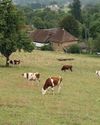
How to Buy a Smallholding in France- Long-time smallholder Lorraine Turnbull looks at the practicalities of moving to rural France
Aspiring smallholders are continually thwarted by the prices of smallholdings and property with land located within the UK. Even the humblest croft in Scotland comes with a substantial price tag and conditions which would make even an adventurous wannabee consider carefully. But all is not lost. For those willing to take the adventure of a lifetime, there is always Europe, and one of the most popular places is France.

Meet the Bournemouth goats and their supporters
These capricious animals are hard workers preserving the natural habitat

Still warm enough to sit outside with a Pizza
Henrietta Balcon uses fresh figs to create an unusual dish at Harvest time
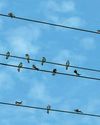
Goodbye to the birds of spring and summer
If you look and listen you might be able to see them preparing to leave says The RSPB
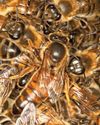
Get ready for the colder weather in the warmth of late summer
Claire Waring advises on doing the best to make sure your colonies survive until next spring

Preparing the Veg Patch for Winter
Lee Senior says, a well-run plot can excitingly continue to produce good quality, tasty, fresh food for much of winter
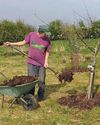
Time to prepare to plant your orchard
Wade Muggleton, smallholder and author of The Orchard Book, shares his practical experience so you can create your own fruit collection
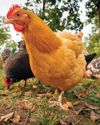
Choosing feed for the autumn
As autumn approaches, Joanna Palmer, nutritionist at the Smallholder Range, offers advice on choosing the right feed to support your adult birds through their annual moult and ensure your young birds grow and finish well at this time of the year.
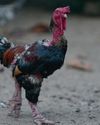
Vet advice from an experienced poultry vet
Reflecting on how much the humble hen has helped people world wide plus advice on stopping the scourge of red mite
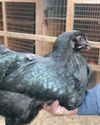
Give your hens some support
Paul Donovan looks at the right and wrong ways of handling birds